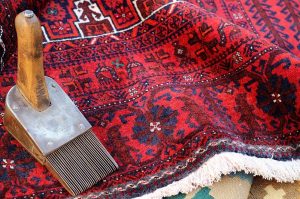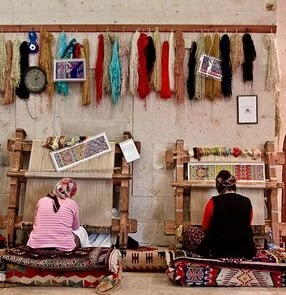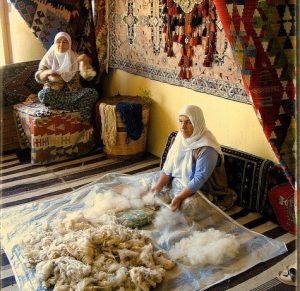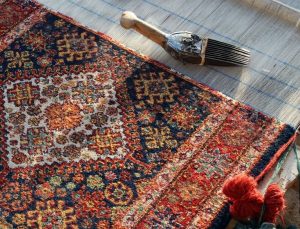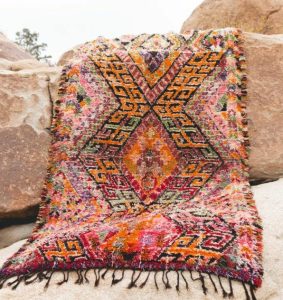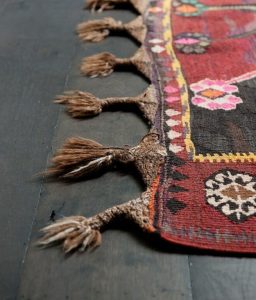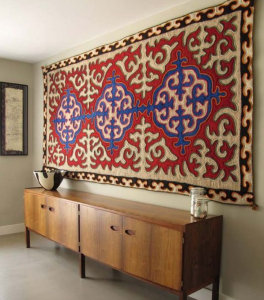Advantages & disadvantages of wool area carpet?
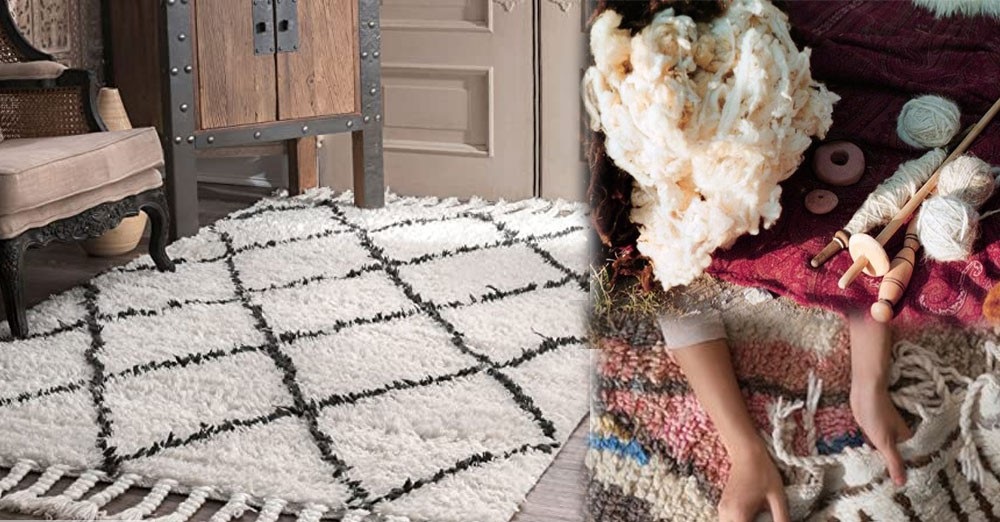
Advantages and disadvantages of wool Carpets and Rugs
Wool carpets and rugs offer several advantages and disadvantages that are important to consider when selecting the right flooring option for your space. One significant advantage of wool carpets and rugs is that they are highly durable natural fibers, making them wear and tear resistant. Wool fibers have a natural resistance to staining and repelling water, making it easy to clean up spills and maintain the carpet’s appearance, wool is an excellent insulator, which means it can help to regulate the temperature in your home and reduce your energy bills.
Carpets & rugs are some of the most attractive items prepared for the house and immersed in their design, color, and patterns. The wool carpets display the beauty of the yarn so much that it is as if we are walking through a rainbow of colors.
It is good to know that there are many different types of carpets, each with another material and specific characteristics, which interest many people. In the meantime, handmade wool area carpet is one of the most popular and beautiful carpets that hardliners choose.
If you are interested by world of carpets and its beautiful patterns, or you want to know more about woolen rugs and their unique features, stay tuned to Ersaly Magazine:
What is a woolen carpet?
It is good to know that wool is one of the essential fibers that has been used in carpet weaving for many years. As one of the leading countries in weaving and producing machine-made and handmade carpets, Iran also uses wool fibers in weaving its rugs with many fans.
You should know that wool is made naturally from the hair of animals such as sheep, goats, or camels, and after it turns into yarn, the handmade carpet with it.
If we want to define this type of carpet simply, we should say: “A hand-knotted carpet that with woolen fibers is called a woolen carpet.”
Know the characteristics of woolen carpets
When you hear that wool carpets are also among the types of carpets, the question that comes to your mind is what are the remarkable features of this carpet?
Advantages of Wool Carpets:
- Woolen carpets have fibers full of healing and natural properties that are very useful for the body.
- Woolen carpets are thicker and stronger than other carpets and have a unique beauty.
- Woolen carpets’ smell, color, and charm are much more famous than others and have a unique spectacle.
- As we mentioned, this type of carpet has extraordinary healing properties for the body. When you sit on this rug or relax, your blood circulation is better in your body. Relaxing the nerves, absorbing body sweat, helping to sleep easier, and relieving muscle pain are other benefits of this carpet.
- One of the most attractive features of a beautiful woolen carpet is that it retains heat. This type of carpet has more heat and is the best carpet for the cold winter season. It also does the opposite in the summer.
- Moisture does not damage this type of carpet and maintains its capabilities well against it. Therefore, it can be said that it is one of the best carpets to use in northern cities with humid weather.
- There are famous and perfect breeds of sheep in Iran from which the best type of wool is produced. These breeds include Kurdish, Ghezel, Baluchi, Afshari, and Bakhtiari, from which high wools are obtained.
Disadvantages of Wool Carpets:
Wool carpets are a popular choice for homeowners due to their durability, softness, and natural insulation properties. However, they come with some disadvantages that should be considered before purchasing.
- wool carpets tend to be more expensive than synthetic options. This is due to the cost of wool as raw material and the additional care and maintenance required to keep them looking their best.
- wool carpets are more susceptible to staining than synthetic options. This is because wool fibers are more absorbent and can easily hold onto spills and stains. This means that regular cleaning and maintenance are necessary to keep the carpet looking good.
- Wool carpets can be prone to shedding and pilling. This is because wool fibers can break down over time, causing the carpet to lose its softness and become rough to the touch. While regular vacuuming and maintenance can help reduce shedding and pilling, it is important to consider this when deciding whether or not to choose a wool carpet.
5 Disadvantages of Wool Carpets
-
It can be itchy: Wool fibers can be rough and cause skin irritation in some people, making it uncomfortable to wear.
-
It requires special care: Wool is a delicate fabric and requires special care when washing, drying, and storing. It may shrink, fade or lose its shape if not handled properly.
-
It can be expensive: Wool is generally more expensive than other fabrics, making it less accessible to those on a budget.
-
It is unsuitable for all climates: Wool is warm and insulating, making it great for cold weather. However, wearing in warmer climates or during the summer can be uncomfortable.
-
It is not animal-friendly: Wool is made from the hair of sheep and other animals, so it is not a vegan or animal-friendly product. Some people may also have ethical concerns about the treatment of sheep in the wool industry.
The difference between Hand made and machine wool area rugs:
Is Wool Carpet Worth the Investment? A Look at the Advantages and Disadvantages
When considering the purchase of a wool carpet, it’s essential to weigh its long-term value against the initial investment. Wool carpets are renowned for their durability, natural comfort, and insulating properties, which can contribute to energy savings and a cozy home environment.
They are also eco-friendly, being made from a renewable resource, and offer excellent sound absorption, enhancing the tranquility of your space. the higher cost, potential for moisture damage, and maintenance requirements may deter some buyers.
Wool carpets can be prone to fading, moth damage, and might not be the best choice for those with allergies to natural fibers. Ultimately, if the advantages align with your lifestyle and you’re prepared for the upkeep, wool carpet can be a worthwhile investment for its beauty and longevity. If budget and ease of maintenance are your primary concerns, synthetic options might be more suitable.
The Good, the Bad, and the Ugly of Wool Carpets and Rugs
Wool carpets and rugs offer a range of benefits, from their natural fibers to their durability and resistance to stains. However, they also have their drawbacks. Wool carpets can be expensive and may require regular professional cleaning and maintenance to keep them looking their best.
Wool is susceptible to fading when exposed to sunlight, and moths and mildew can damage it. Knowing both the advantages and disadvantages of wool carpets and rugs can help you make an informed decision when selecting flooring for your home.
Wool carpet pros and cons
Wool carpets are popular for many homeowners due to their natural beauty and durability. Here’s a comprehensive look at the pros and cons of wool carpets:
Pros:
- Durability: Wool carpets are known for their longevity and can withstand decades of wear.
- Natural Material: Wool is a sustainable and eco-friendly flooring choice.
- Comfort: Wool carpets are soft and provide a comfortable underfoot experience.
- Insulation: Wool has natural insulating properties, making it energy-efficient.
- Sound Absorption: Wool carpets can help reduce noise levels in your home.
Cons:
- Cost: Wool carpets are generally more expensive than synthetic options.
- Moisture Sensitivity: Wool can be damaged by spills and has a higher sensitivity to moisture.
- Moth Attraction: Wool can attract moths, which may cause damage if not properly maintained.
- Stain Susceptibility: While wool has some natural stain resistance, it can still be susceptible to certain types of stains.
- Maintenance: Requires regular maintenance and professional cleaning to maintain its appearance.
- Allergies: Some people may be allergic to wool or find the texture irritating.
Benefits of Choosing Wool Carpets and Rugs
Wool is an option worth considering when choosing carpets or rugs for your home. Wool fibers are natural, renewable, and durable, making them eco-friendly and long-lasting. Wool carpets and rugs have excellent insulating properties, which can help to reduce energy costs and keep your home comfortable year-round.
Wool carpets and rugs are also more expensive than synthetic alternatives, requiring special care to maintain their appearance. Ultimately, whether wool carpets and rugs are the right choices for you depends on your preferences and budget.
What is the price of Woolen carpets vs. hand-made carpets?
You probably know that machine-made carpets have much lower prices than hand-woven carpets because they are knotted with the machine. The weaving work of this type of carpet is done easily and quickly, so their price estimation is cheaper than the types of hand-made carpets.
Wool area carpet and its application in home decoration
The last word:
FAQ:
What are the advantages of wool carpets and rugs?
Wool carpets and rugs are natural, durable, stain-resistant, water-repellent, and excellent insulators.
What are the disadvantages of wool carpets and rugs?
The disadvantages of wool carpets and rugs are their cost, tendency to fade when exposed to direct sunlight, maintenance-intensive nature, and susceptibility to damage from moths and mildew.
Why are wool carpets and rugs expensive?
A: Wool is a high-quality natural fiber that is in high demand for its durability, softness, and insulating properties, which makes it a more expensive option compared to synthetic fibers.
Can moths and mildew damage wool carpets and rugs?
Yes, wool carpets and rugs can be damaged by moths and mildew if they are not properly maintained or stored in damp areas.
How often should wool carpets and rugs be professionally cleaned?
Wool carpets and rugs should be professionally cleaned at least once a year to maintain their appearance and prolong their lifespan.
How can fading of wool carpets and rugs be prevented?
A: Fading of wool carpets and rugs can be prevented by keeping them away from direct sunlight or by using UV-resistant window coverings in areas where they are exposed to sunlight.
source: cutt.ly, rebrandly, bitly,





